February 201636 yards hawthorn hedge, Dinton, Bucks. Midland style
This hedge had been laid previously and was ready to be laid again to fill in the gaps once more.
If you look carefully you can see the steel cable supporting the telephone pole in the first picture. It can be time-consuming working around immovable obstacles such as this where it is necessary to lay a lot of hedge past it. |
|
 |
 |
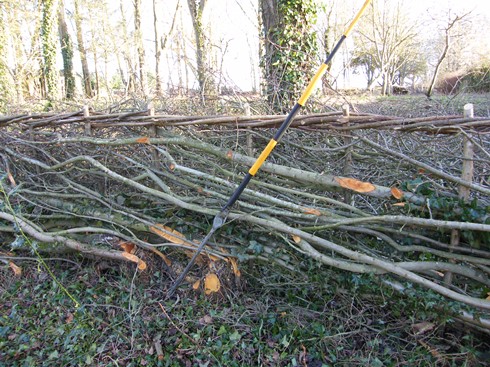 |
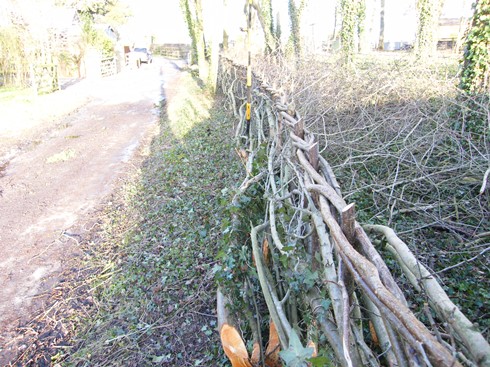 |
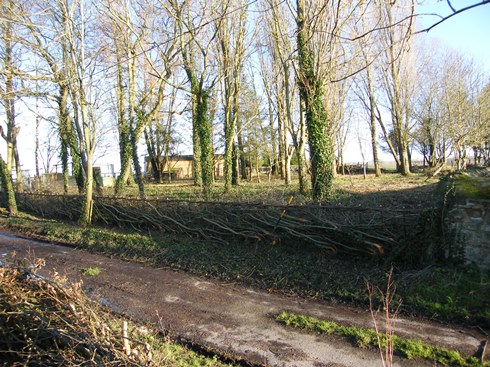 In the picture above you can just two stems bottom right at the back of the hedge which have been laid the opposite way to leave live material at the very end of the hedge. Surplus brush cut out of the hedge is lying on the ground behind the hedge and has yet to be cleared away. In the picture above you can just two stems bottom right at the back of the hedge which have been laid the opposite way to leave live material at the very end of the hedge. Surplus brush cut out of the hedge is lying on the ground behind the hedge and has yet to be cleared away. |
|
|
136 yards hawthorn, blackthorn, crab and ash hedge, Salford, Beds. "Live Midland style" |
|
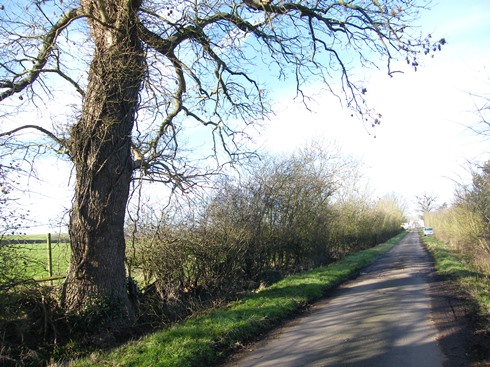 |
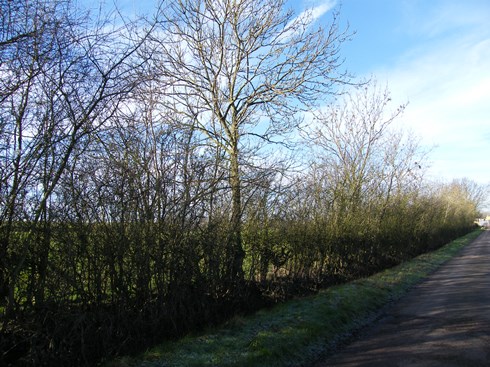 |
|
Whereas stakes added to a hedge are typically made a prominent feature of the hedge, especially where the hedge is bound, the opposite is generally true of live stakes, which are purely functional and not normally aesthetic. In the image below on the left one live stake has been retained this side of the tree and in the image on the right there are two. They are no higher than they need to be. Some might be only be half or even quarter the height of the hedge.
|
|
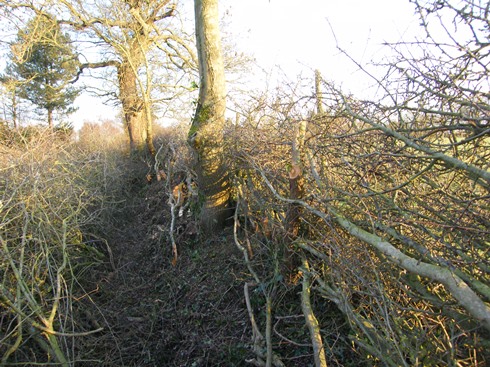 |
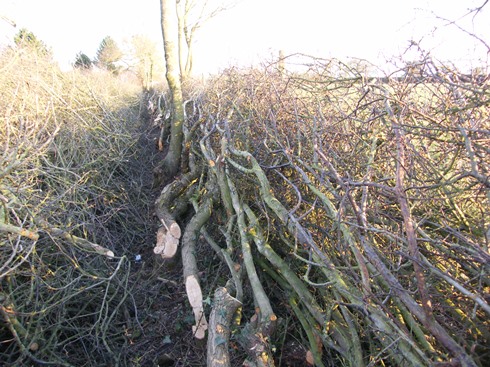 |
|
The image below shows how much brush has been cut out of the hedge. this particular section features laid ash. Most of the retained trees were ash, though also crab apple and field maple. |
The image below shows three live stakes, all different shapes and sizes; none higher than they need to be to do their job. As many live stems are laid into the hedge as possible, so as well as sometimes being in just the right place, live stakes could be stems that were a bit short or awkwardly placed or shaped to lay,
|
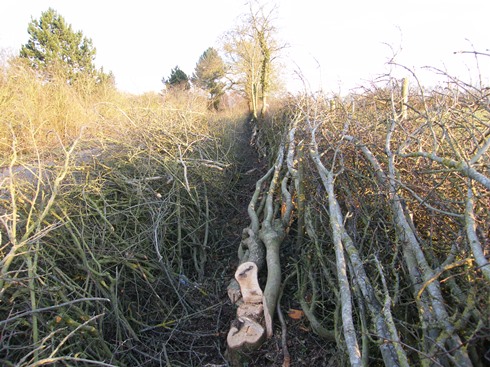 |
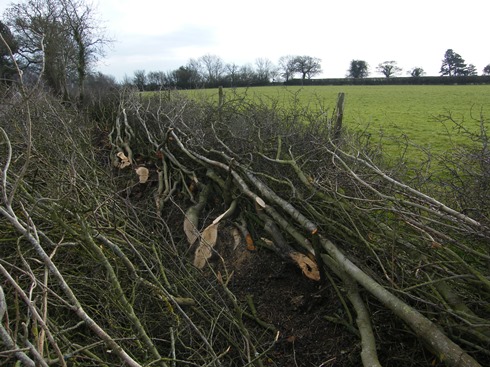 |
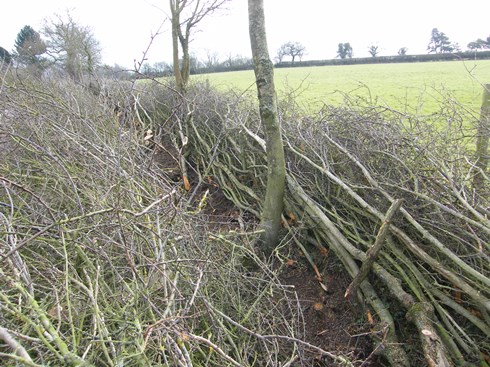 The image to the left shows a retained tree doubling as a live stake in the hedge and in the foreground a live stake with a kink in it. Whilst this would have made it an awkward to incorporate into the hedge if laid, instead it is a great shape for a live stake. |
|
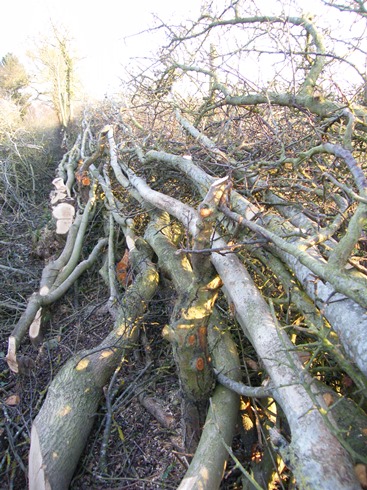 The image to the right shows two retained live stakes. With a wide hedge angled away from a ditch they are more useful if they naturally angle in towards the top of the hedge, as here. Had these stems been vertical they would not have been as effective and would have been cut off much lower. |
|
An unusual section comprising predominantly very overgrown crab apple. The small elm on the far left is used as a stake to secure the start of the hedge and there is then enough material to fill in the considerable gaps |
|
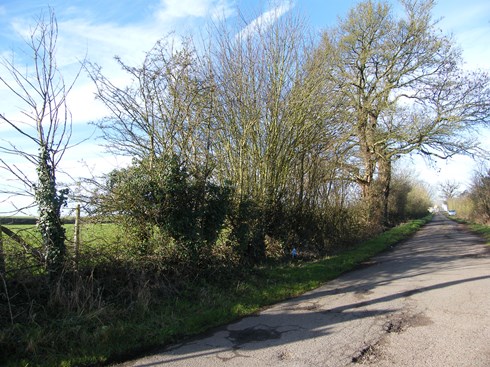 |
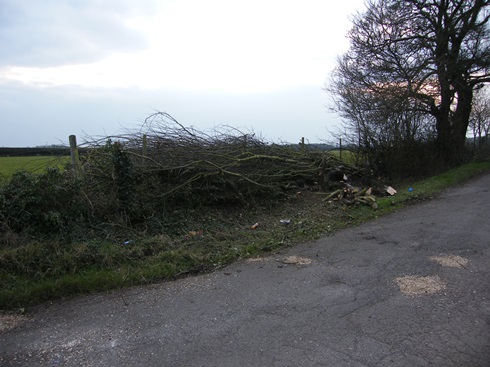 |
 |
|
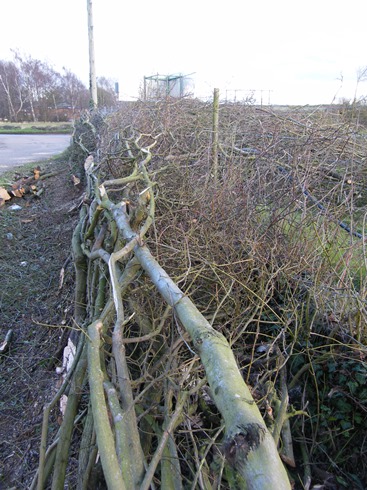 |
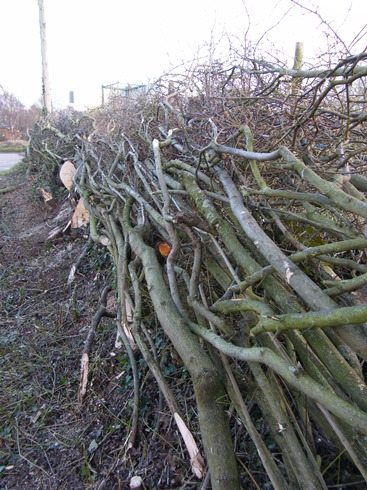 |